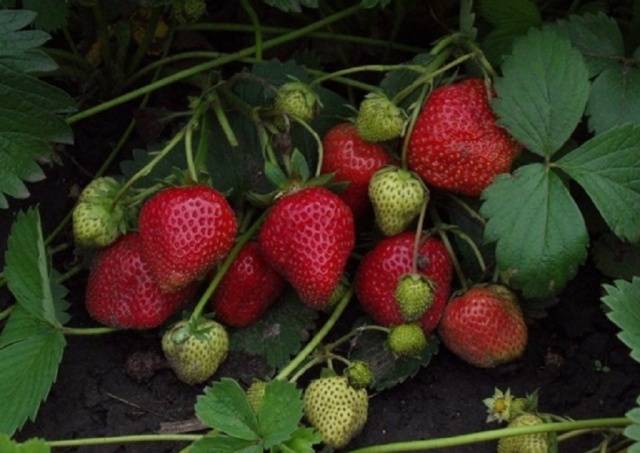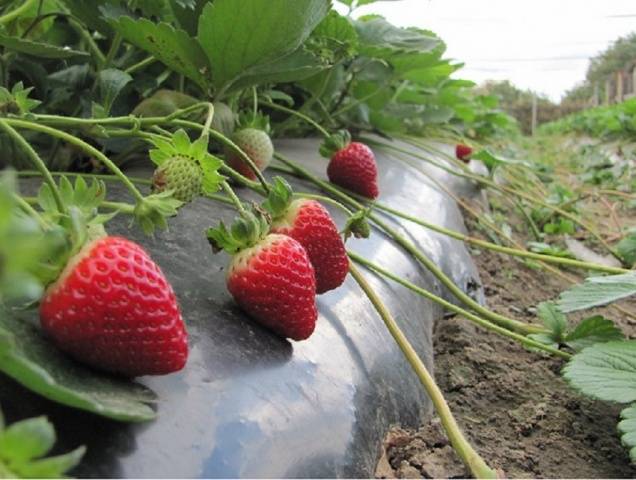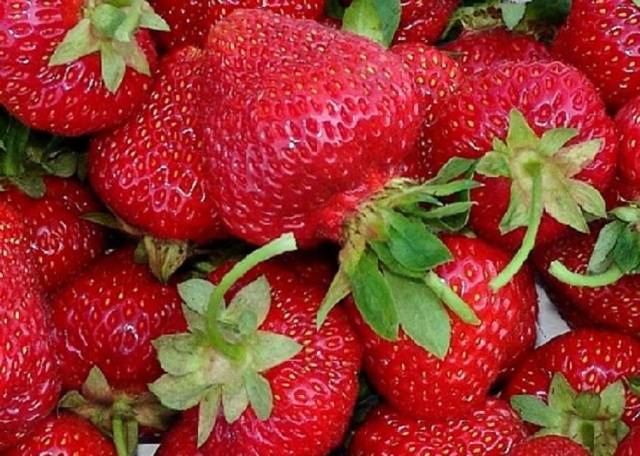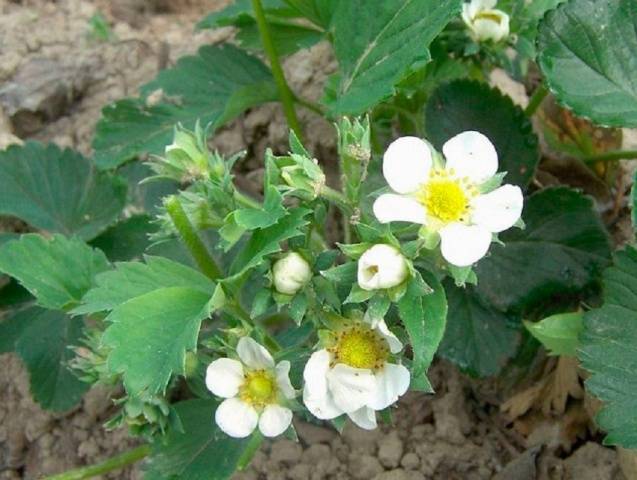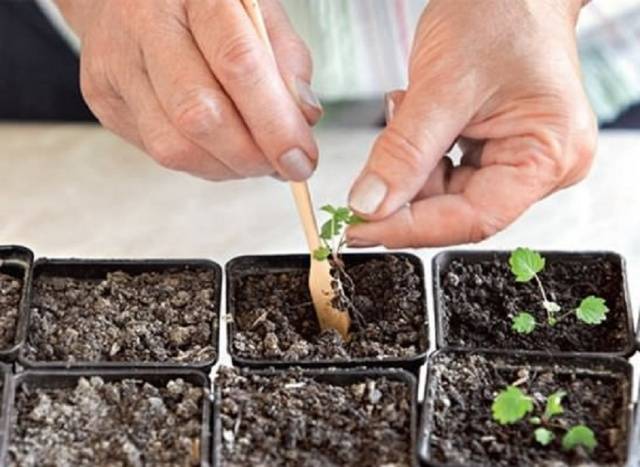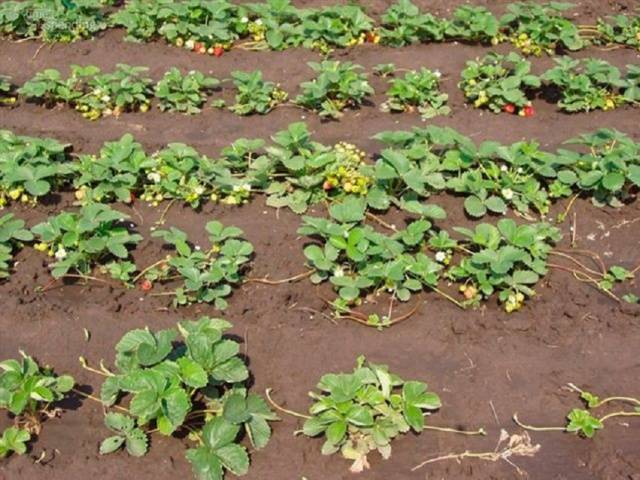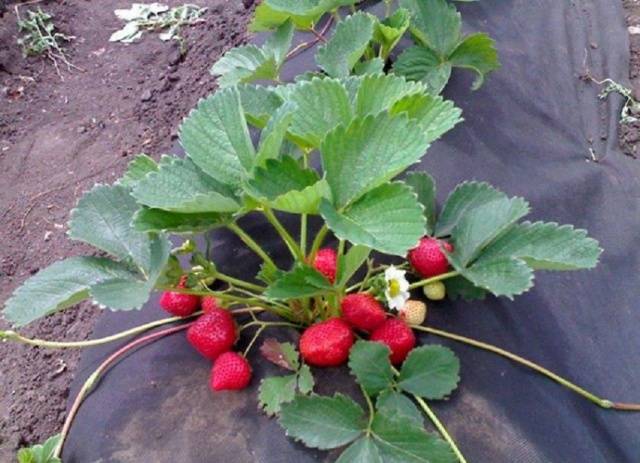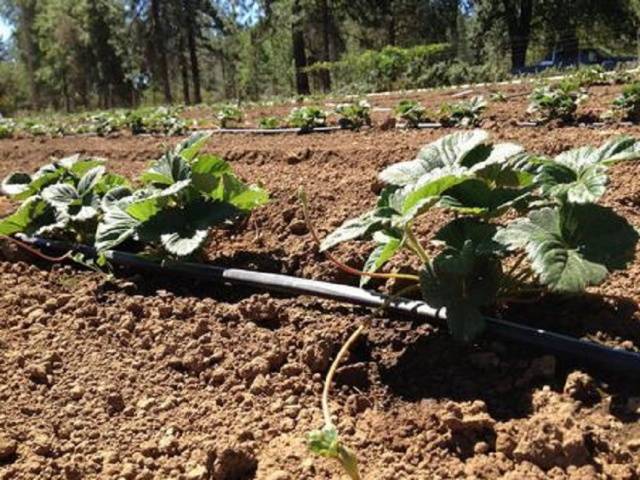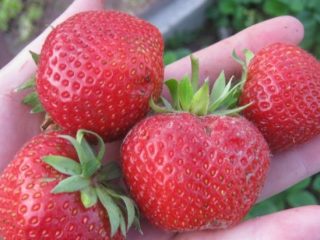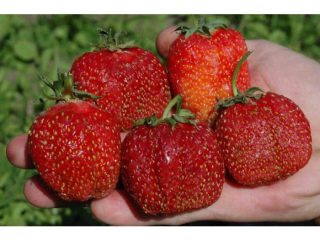Content
When planting strawberries on a plot, gardeners prefer large-fruited, high-yielding varieties with an extended fruiting period. Naturally, the flavor of the berries must also be of a high standard. Large-fruited varieties meet these requirements. renovation berries, which include the “Geneva” strawberry.
The variety was bred for a long time, already in the 90s of the last century, gardeners were actively growing "Geneva" on their plots. If you pay attention to the description of the variety, photos and reviews of the "Geneva" strawberry, then immediately there is a desire to plant a great variety.
Description and characteristics of the variety
A more detailed acquaintance with the description and photo of the "Geneva" strawberry variety will help gardeners grow an excellent harvest. Therefore, let's start with the external characteristics in order to imagine how the plant in the garden will look like:
Bushes the strawberries of the "Geneva" variety are powerful, rather squat and spreading. Therefore, planting too close can lead to thickening of the rows and the spread of gray rot. One bush gives 5 to 7 whiskers. This is the average for the crop, so the variety does not require constant removal.
Leaves “Geneva” is light green and medium in size. Peduncles are long. But the fact that they are not erect, but inclined to the soil, leads to a low position of the berries. When planting Geneva strawberries, care should be taken that the berries do not touch the ground.
Berries... Fruits of different sizes grow on one bush. "Geneva" refers to large-fruited varieties, one berry in the first wave of fruiting reaches a weight of 50 g more. The main disadvantage of the variety is that gardeners note the tendency of berries to shrink during the growing season. Late harvest differs in that strawberries become almost 2 times smaller. But the aroma is so persistent and rich that the place of planting of strawberries can be determined from afar. The shape of the fruit resembles a truncated red cone. The pulp is fragrant, juicy, sweet taste. According to the description of the variety, the fruits of the “Geneva” strawberry do not have an acidic aftertaste, but they cannot be called cloyingly sweet either. Gardeners note a very pleasant and memorable taste.
Now let's move on to those characteristics that most attract strawberry lovers.
Fruiting... According to the description, the “Geneva” strawberry belongs to the remontant varieties, and the gardeners' reviews testify to the stability of fruiting even under unfavorable conditions. But the variety has some peculiarity.
The first time the harvest "Geneva" is harvested in the first decade of June. Then the bushes of the variety have a short rest for 2.5 weeks. At this time, the strawberry throws out the mustache, and the re-flowering begins.
Now the berries are harvested in early July, and the plants form and root rosettes on the whiskers. After the formation of the 7th leaf, these rosettes begin to bloom, which ensures further uninterrupted fruiting until frost. This is the peculiarity of the remontant variety "Geneva", which bears fruit on young plants, and not only on maternal ones. If the variety is grown in an unlucky year, when there are few sunny days and it rains often, then "Geneva" still gives a good harvest at the expense of internal reserves.
Disease and pest resistance... Genetically, the variety is bred so that the main fungal and viral infections are not capable of causing significant harm to "Geneva".Invasions of a spider mite are also not afraid of plantings. It is necessary to pay attention to the prevention of gray rot. This disease affects the Geneva strawberries in violation of the requirements of agricultural technology.
Life cycle... Geneve strawberries age much earlier than conventional varieties. According to gardeners, the “Geneva” strawberry variety has this feature. A maximum of three years, you can hope for a high yield, and then the yield drops, which makes the further cultivation of old bushes unprofitable.
Growing basics
The description of the Geneva strawberry indicates that the variety can be propagated using cuttings (whiskers) or seeds. Propagating strawberries by rooting a mustache is quite simple, so this method is also available to novice gardeners. The whiskers that appear after the first wave of fruiting are rooted using a "slingshot" or planting in separate pots. The sooner the rooting is carried out, the more powerful the strawberry seedlings will turn out.
The second method is more time consuming and complex. Experienced gardeners choose it. Let's take a closer look at the process of sowing seeds and caring for seedlings.
Sowing
Some gardeners begin to prepare purchased seeds for planting in January. First, the planting material is placed in the refrigerator on the top shelf and left for a month. In the regions of the middle lane, sowing is scheduled for the end of February or the beginning of March. In the southern regions, the dates are shifted 2 weeks earlier.
Sowing begins. It is best to use ready-made universal seedling soil. Containers with a diameter of 10-15 cm are suitable as containers. For germination of seeds of strawberries "Geneva" provide a substrate moisture content of at least 80%. To do this, add 800 ml of water to 1 kg of dry soil and mix until smooth.
Now the container is filled with wet soil, but not to the very top. Leave 2-3 cm for quality seedling care. The surface is compacted quite a bit and laid out on top Strawberry seeds varieties "Geneva". Now sprinkle the seed with a thin layer of soil or sand, moisten it with a spray bottle, cover it with glass (film) and place it in a bright, warm place. Now you have to be patient. Strawberry sprouts "Geneva" sprout unevenly. The former may appear after 35 days, and the remaining ones at 60 days.
Care
Until the first shoots appear, the soil is kept in a slightly moist state. The ideal germination temperature is 18 ºC -20 ºC. At this temperature, the seeds germinate in 2 weeks. The emerging sprouts signal that the seedlings should be transferred to a very well-lit place. If this is not possible, then the seedlings of "Geneva" will have to be illuminated. The second important condition is regular ventilation.
Picking
Strawberry seedlings "Geneva" dive in the stage of 2 true leaves. This usually happens after 1.5-2 months. Seedlings are planted in separate containers at the same depth.
Now the care consists in moderate watering and mandatory hardening 2 weeks before planting. As soon as the seedlings of "Geneva" are adapted, the bushes are planted in a permanent place.
Planting seedlings in open ground
There are two planting dates for strawberries "Geneva", which, according to gardeners, are the most favorable. In the spring, the event is scheduled for mid-May or a little later, and in the fall - mid-August and until the end of September. The best location for strawberry beds is considered to be the area where legumes, parsley, garlic, radishes or mustard were grown. But nightshades, raspberries or cabbage are not very successful predecessors for "Geneva". It is important to choose a sunny and leveled place for the variety in order to prevent stagnant moisture on the ridges. Strawberries "Geneva" prefers loam or sandy loam with a neutral (possibly slightly acidic) reaction.But the culture does not like peaty or sod-podzolic soil. In this case, you will have to take measures to improve the structure. Prepare the soil in advance. For the spring planting of seedlings, preparatory work begins in the fall, for the fall - in the spring:
- The ground is dug up with a pitchfork, at the same time clearing weeds, debris and other plant debris.
- When digging for 1 sq. m add compost, humus or manure (1 bucket), wood ash (5 kg).
- A month before the scheduled date of planting, 1 tbsp is introduced into the soil. spoon of "Kaliyphos" means for 1 sq. m area.
The very process of landing "Geneva" at different times of the year is absolutely identical.
If we take into account the description of the variety and the gardeners' reviews of the “Geneva” strawberry, then it is better to plant the remontant species in late summer or autumn. In this case, the seedlings have time to take root before the onset of winter. Pests and diseases also lose activity at this time of the year, which allows maintaining the viability of young plants.
There are two ways to plant strawberries:
- private (25 cm x 70 cm);
- carpet (20 cm x 20 cm).
Planting is easier for plants if it occurs on a cloudy day. 1-2 seedlings are placed in one hole and make sure that the roots do not bend up, and the heart is above ground level. The earth is tamped down and strawberries are watered.
Care for mature bushes
Competent care of Geneva strawberry bushes consists of:
- loosening the soil and mulching (straw, agrofibre);
- abundant regular watering, drip is better (the variety has a superficial arrangement of the roots);
- feeding (very important after the first harvest);
- timely treatment against pests and diseases;
- weeding rows, removing excess whiskers and reddened leaves.
Pruning of the remontant variety "Geneva" can be omitted so that the plant does not lose its vitality.
To prevent freezing, the ridges are covered with straw before winter. Many gardeners practice the cultivation of Geneva strawberries in greenhouses, especially in regions with a cool climate. This makes it possible to collect the second wave of ripe berries in full.
Testimonials
In addition to the description of the variety and photos, reviews of gardeners play an important role in getting to know the Geneva strawberries.
